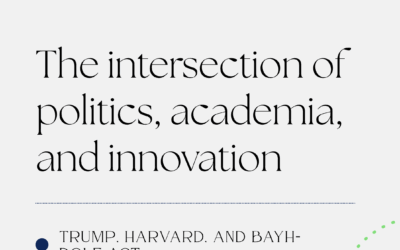USPTO AI Patent Eligibility Guidance: Navigating Artificial Intelligence Patent Applications
The landscape of artificial intelligence patent law has fundamentally shifted with the United States Patent and Trademark Office’s release of comprehensive AI patent eligibility guidance. This groundbreaking update addresses the critical intersection of AI inventions and patent subject matter eligibility, providing much-needed clarity for patent applications involving artificial intelligence technologies.
Understanding the New AI Patent Eligibility Framework
The USPTO’s updated guidance on AI patent eligibility represents a pivotal moment for inventors and patent practitioners working with artificial intelligence innovations. This comprehensive framework, which became effective on July 17, 2024, directly addresses the challenges that have long plagued AI patent applications under 35 U.S.C. § 101 subject matter eligibility requirements. The guidance builds upon existing patent eligibility principles while specifically addressing the unique characteristics of AI inventions and machine learning technologies.
Patent examiners and applicants have struggled for years with determining when AI-related claims constitute patentable subject matter versus abstract ideas. The new USPTO AI guidance provides detailed analysis on how to evaluate whether artificial intelligence claims recite abstract ideas and, crucially, when such claims can be integrated into practical applications that satisfy patent eligibility requirements.
Key Elements of AI Patent Subject Matter Eligibility
The updated guidance introduces several critical components that reshape how AI patent applications are examined. The framework provides enhanced clarity on abstract idea analysis specifically tailored to artificial intelligence inventions, addressing common issues that arise when patent claims involve algorithms and AI processes. Patent practitioners working on AI applications will find particular value in the guidance’s detailed discussion of when AI technologies move beyond mere abstract concepts to become patentable inventions.
The guidance’s treatment of practical application integration represents another significant advancement for AI patent eligibility. Rather than applying generic patent eligibility principles, the updated framework recognizes the specific ways that artificial intelligence technologies can be integrated into practical applications. This targeted approach should result in more consistent patent examination outcomes for AI inventions.
Three comprehensive examples accompany the guidance, demonstrating real-world application of AI patent eligibility principles across different technology sectors. These hypothetical claim scenarios provide concrete illustrations of how patent examiners should apply the updated guidance during patent prosecution, appeals, and post-grant proceedings involving artificial intelligence technologies.
Strategic Implications for AI Patent Applications
For companies developing artificial intelligence technologies, this guidance update offers unprecedented clarity for patent strategy development. Patent attorneys can now provide more definitive advice on the patentability of AI inventions during the development process, potentially saving significant time and resources in patent prosecution. The improved predictability in AI patent examination should enable better strategic planning for intellectual property portfolios involving artificial intelligence technologies.
The guidance also addresses practical concerns that have emerged as AI technologies become more prevalent in patent applications. Companies working on AI-assisted inventions can now better understand how their innovations align with patent eligibility requirements, while patent prosecutors gain clearer direction on how to craft AI patent claims that satisfy subject matter eligibility standards.
Comprehensive USPTO AI Initiatives and Patent Policy
This AI patent eligibility guidance represents just one component of the USPTO’s broader artificial intelligence initiative. Earlier in 2024, the office released inventorship guidance for AI-assisted inventions, providing clarity on when artificial intelligence tools can be involved in the invention process while maintaining human inventorship requirements. The office has also issued guidance for practitioners using AI tools in patent practice and continues to seek public input on various AI-related patent policy questions.
These comprehensive efforts demonstrate the USPTO’s recognition that artificial intelligence represents a transformative technology requiring thoughtful patent policy development. The guidance update fulfills commitments made under the Executive Order on AI development, highlighting the federal government’s understanding that robust intellectual property protection plays a crucial role in encouraging continued AI innovation while maintaining appropriate patent eligibility standards.
Patent Examination Process and AI Technologies
The updated guidance should significantly improve the patent examination process for AI inventions. USPTO patent examiners now have specific tools and examples for evaluating artificial intelligence patent applications, which should lead to more consistent examination outcomes and reduced prosecution delays. The guidance provides detailed analysis of Federal Circuit decisions relevant to AI patent eligibility, ensuring that examination practices align with current case law developments.
Patent applicants working on AI technologies can expect more predictable examination experiences as examiners become familiar with the new guidance framework. The comprehensive examples and detailed analysis should reduce the uncertainty that has historically surrounded AI patent applications, particularly those involving software implementations of AI algorithms and architectures.
Industry Impact and Future AI Patent Trends
The release of this AI patent eligibility guidance comes at a critical time as artificial intelligence technologies continue to transform industries worldwide. AI innovations require clear patent protection pathways to encourage continued investment and development. The guidance should facilitate more effective patent prosecution for companies developing AI technologies across diverse application areas.
Looking forward, the rapidly evolving nature of artificial intelligence technology means that patent law and examination practices will need to continue adapting. The USPTO’s approach of regularly updating guidance based on technological developments and public input suggests a flexible framework capable of evolving with AI advancement. Patent practitioners should expect continued refinements to AI patent eligibility guidance as new technologies emerge and case law develops.
Optimizing AI Patent Applications Under New Guidance
For patent practitioners preparing AI patent applications, understanding how to leverage this new guidance effectively will be crucial for successful prosecution. The guidance provides specific direction on drafting patent claims that clearly integrate artificial intelligence technologies into practical applications, moving beyond abstract algorithmic concepts to patentable inventions. Patent attorneys should carefully study the provided examples to understand how different AI technologies can satisfy patent eligibility requirements.
The updated framework also emphasizes the importance of detailed technical disclosure in AI patent applications. Patent specifications should clearly describe how artificial intelligence technologies solve specific technical problems and provide concrete technical improvements over existing approaches. This focus on technical contribution aligns with broader patent eligibility trends while providing clear direction for AI patent prosecution.
Public Engagement and Ongoing Development
The USPTO continues to seek public input on AI patent policy through extended comment periods, with the current deadline for comments on the AI patent eligibility guidance extended to October 16, 2024. This ongoing dialogue between the patent office and the intellectual property community ensures that guidance development reflects real-world challenges and technological realities facing AI innovators.
The comprehensive nature of the USPTO’s AI initiative, including this patent eligibility guidance, inventorship guidance, and practitioner guidance, creates a robust framework for addressing artificial intelligence’s impact on intellectual property law. As AI technologies continue to evolve, this foundation should provide the flexibility needed to adapt patent policy while maintaining clear standards for patent eligibility and examination consistency.
For more information about the guidance and related resources, visit the USPTO’s AI-related resources page and the patent eligibility guidance page.




